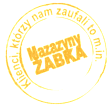Guide to telehandlers
What are commonly referred to as telehandlers are actually lift trucks with mechanical lifting motive power. By definition, they are a crane with an attached platform, forks or other load handling devices. As specialised work machines, they are used for a variety of jobs due to their compact design and ability to operate in difficult conditions. They are most commonly used in agriculture and on construction sites. Their main advantage is their versatility and multi-tasking thanks to variable attachments such as buckets, winches with cable, hooks or cranes.
Application
Telescopic handlers are among the all-rounders, as they are suitable not only for construction and agriculture, but also for mining, forestry and the timber industry, and can also be found in seaports and aviation.
The industries where specialised forklifts are most commonly used include construction, transport, farming and animal husbandry. Today, the technology used in these machines means that telehandlers have much more potential than the industries mentioned.
The use of telehandlers in agriculture
Thanks to a wide range of attachments, special-purpose trucks are successfully used in animal husbandry, crop growing and fruit farming. They are suitable for cleaning work, unloading and loading heavy objects or fertilisers, but also for transporting hay bales and fodder. On farms focused on crops, e.g. fruit, telehandlers are used for transporting agricultural produce, stacking it in warehouses, etc.
It is safe to say that specialised trucks are an alternative to tractors. They are irreplaceable when transporting bulk materials. Manufacturers are constantly increasing their usability by equipping them with additional accessories such as buckets, grapples, augers, sheaf blades and many others, which makes it possible to use them for transporting straw, hay, green fodder, as well as for cultivating soil, sowing, green harvesting or clearing land.
Types of chargers telescopic
Machines of this type are classified according to the location of the operator's cab, so we distinguish:
- front loaders in which the driver's cab is rigidly and permanently attached. Some manufacturers offer models with torsion axles. In rigid specialised trucks, the lifting capacity range is from 1.5 to 21 tonnes and the reach is from 2 to 19 metres.
- Swivel trolleys are equipped with a swivel head and two pairs of stabilising supports. These devices, commonly called rotary trolleys, have a lifting capacity in the range of 3-5 tonnes, while the outreach oscillates from 15 to 30 m.
The forklift operator must meet the following requirements:
- at least 18 years old
- completed course forklift operator
- a course on how to change gas cylinders if LPG trucks are used in the establishment
- medical certificate confirming that there are no contraindications to perform this type of work
Application in construction
Specialised forklifts are indispensable in the construction industry as they have a high lifting capacity, with some models even exceeding 20 tonnes. They can be used during unfavourable weather conditions and they speed up all work enormously. A special-purpose rotary truck used on the construction site enables you to efficiently unload loads on pallets, work as a crane and transport materials to great heights with incredible accuracy.
Training programme
The aim of the forklift operation course is to provide the participants with the necessary theoretical and practical knowledge, to prepare them for the national examination and to give them useful tips for their daily work.
Each course must include topics in:
- legislation on telehandlers;
- the required authorisations;
- technical supervision and types of specialised lift trucks with variable reach;
- construction of special-purpose lift trucks with variable reach - drive, boom, electrics, hydraulics, braking system, working attachments;
- operation - operator responsibilities;
- maintenance - duties of the maintenance officer;
- the most common defects in telehandlers;
- Health, safety and first aid in the operation and maintenance of specialised lift trucks with variable reach.
Accessories
Various types of work attachments are used to manipulate loads, making the machine more specialised and precise, and giving users greater functionality and stability of the machine. It is important to always keep in mind the correct load pattern. Interchangeable components may include:
Spoons - allow the handling of bulk materials;
Ropes - needed when using a crane with a winch;
Slings - ancillary equipment such as steel wire ropes, fibre ropes, lacings or bands;
Hooks - working attachments incorporated in the dock leveller crane;
A wide range of additional work attachments allows you to perform::
- stacking
- cleaning and washing
- mowing and mulching
- tree and hedge pruning
- carrying out winter work
- feeding
- bale handling
- stable work
- silage handling
Telescopic handler as a crane
A telehandler is a lifting device, but can be used as a crane - this results in an even wider range of applications. In special cases, with appropriate means (e.g. a cage mounted on the forks), a telehandler can be used to lift people.
Safety in operation
It is the employer's responsibility to regularly check the health and safety of the loader operator, and particular emphasis should be placed on systematically checking the technical condition of the machines. The first step in providing your employees with a relaxed working environment is to select the right equipment for the type of work being carried out and the specifics of the site.
The next step is comprehensive operator training for the specific model of machine used in the company. It is also the employer's responsibility to keep the equipment in good technical condition, and to call for service in the event of problems.
Even before the carriers are put into operation on the company premises, appropriate rules of procedure must be drawn up, specifying in particular
- permissible speeds in storage rooms
- labelling system
- list of particularly dangerous areas
- list of paths excluded for charger traffic
Maintenance
Maintenance of the telescopic carrier should be carried out at the times specified in the machine's operating instructions. The technical condition of the drive mechanisms, braking systems and the boom must be checked regularly. Once a year, the load-bearing structure and the fire-fighting system should be checked. It is important to check controls, signals, lighting and movement limiting devices. Systematic inspections will help to avoid malfunctions and, above all, accidents.
An inspector from the Office of Technical Inspection shall supervise the maintenance logbook, the inspection book and the qualifications of operators and maintenance staff.
































